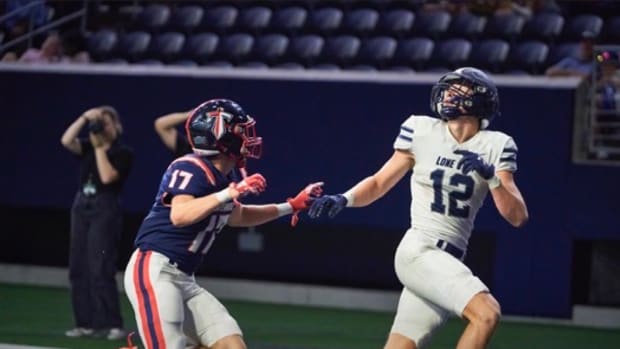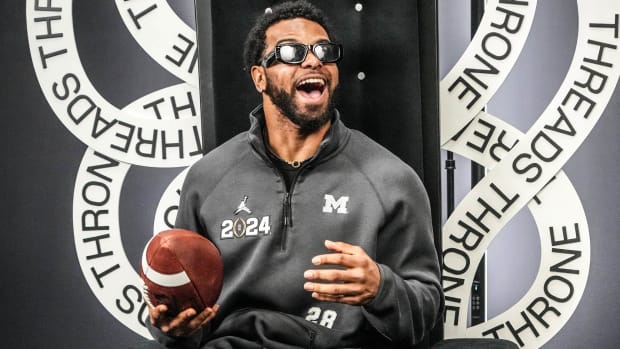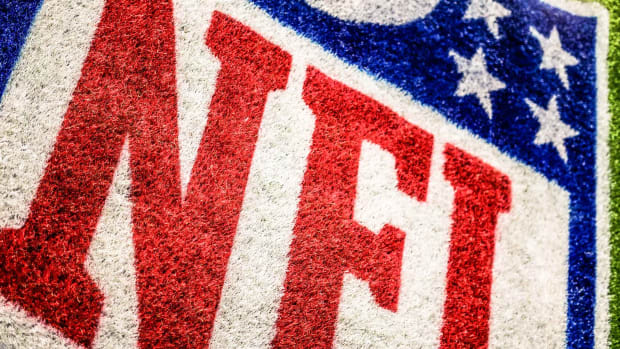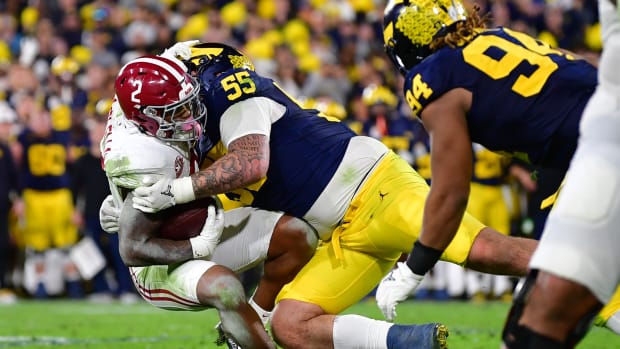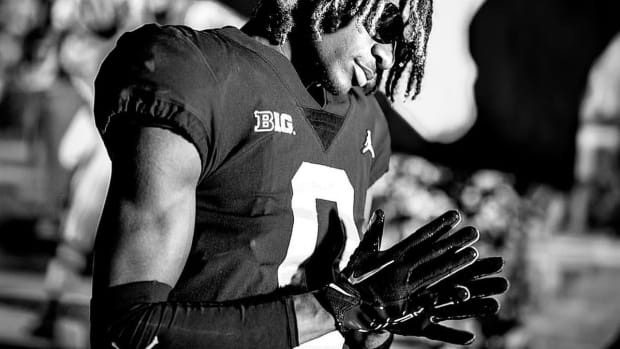Questions We're Asking Following Michigan's Big Win Over Notre Dame
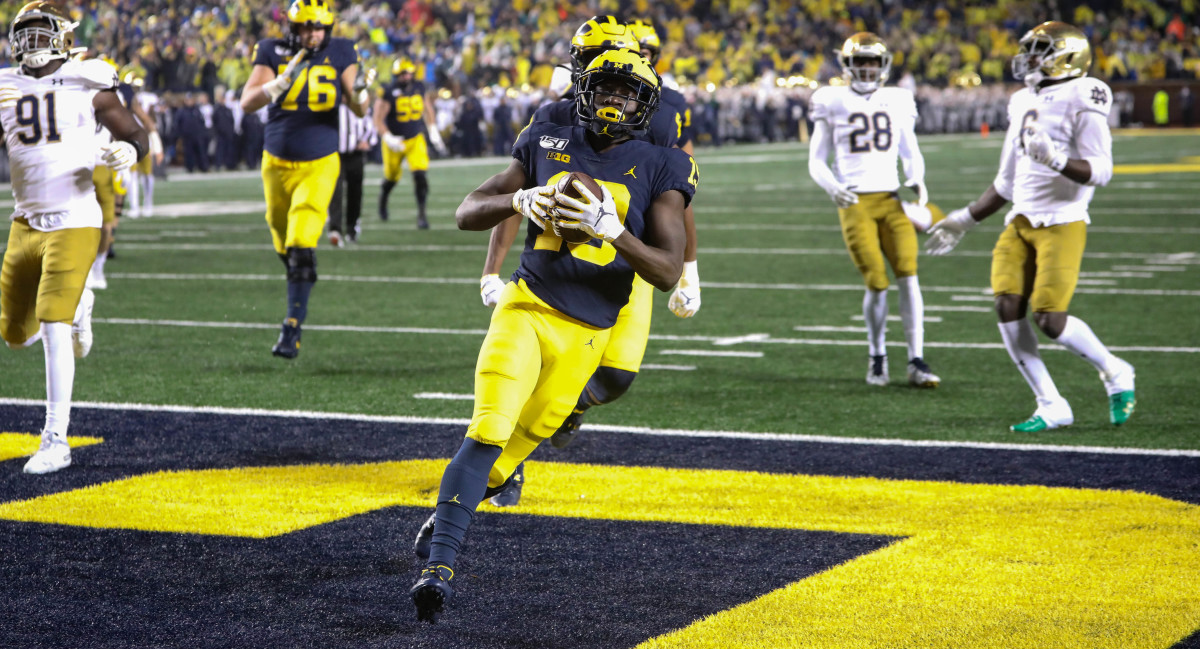
Was Jim Harbaugh right all along?
Following the Wolverines' 10-3 win over Iowa on Homecoming, a day in which Michigan had a season low 267 yards of offense and a season low 4.53 yards per play (6.0 is average in college football with the best teams averaging close to 7.0 while 4.53, for a season, would rank a team 123rd in college football), Jim Harbaugh told the media “I really think we’re hitting our stride, I really do.
"The way our offense has been practicing, the way they’ve been preparing. I have great faith they’re hitting their stride.”
Harbaugh was widely and publicly mocked for his comments. Three games later, the Wolverines have put up 400+ yards in every contest, averaged 6.99, 5.09 and 6.15 yards per play and scored 42, 21, and 45 points in games against the nation's 85th, ninth and 46th ranked defenses, respectively.
So was he right?
In a win at Illinois, the Maize and Blue certainly found something on the ground, putting up a then-season high 295 yards rushing. Michigan scored touchdowns on four of its first six drives and probably should have had points on the other two, missing a chip-shot field goal from 34 yards and fumbling after driving 59 yards.
However, after a dominant first half, U-M faltered in the third quarter, three drives totaling 11 yards, Michigan averaging 1.0 yard per play. The Wolverines were better in the fourth quarter as they outscored the Fighting Illini 14-7 and salted the game away, but still only averaged 5.35 yards per play.
Fast-forward to a trip to Penn State. Again, there were positives to build on - Michigan's 141 yards rushing and 3.44 yards per carry are the most the Nittany Lions have allowed in eight games this season - but U-M trailed 21-0 after five possessions, had 91 yards of offense and 3.25 yards per play, putting the team in a giant hole it was never able to completely dig out of.
From then on, and especially in the second half, Michigan was much better: 248 yards, 14 points (it should have been 21), 6.05 yards per play in the final 30 minutes.
That strong stretch of play appeared to bleed over into this weekend's game as U-M had 96 yards of offense in the first quarter (on pace for 400), 6.0 yards per play, then finished the half with 189 yards of offense and a 17-0 lead.
To put up those type of numbers in the quagmire that was Saturday in Ann Arbor when Notre Dame had 52 yards of offense and averaged 1.9 yards per play in the first half was the surest sign yet that Michigan's rising offense had been bubbling below the surface.
In the second half, Michigan scored 28 points, had 248 yards and averaged 7.5 yards per play as both the rushing attack (136 yards, 5.9 YPC) and the passing game (112 yards, 3 TDs) well ... hit their stride.
But it wasn't always smooth these past three games. There were moments of brilliance, where Harbaugh looked like a savant, and there were moments of significant struggle after his post-game comments.
What Harbaugh likely saw is what everyone thought they knew coming into the year - this is a supremely talented U-M offense, with playmakers at wide receiver, tight end, quarterback, burgeoning running backs, and an experienced, strong offensive line. When the pieces all came together, the Wolverines were poised to be very good.
It certainly didn't look like they were hitting their stride five weeks into the season, following the Iowa game, but it appears they are now.
Does Saturday's win cancel out either of Michigan's two losses?
The Wolverines' 31-point margin of victory over No. 8 Notre Dame outdid the program's 26-point margin over No. 2 ND in 2006 and was Michigan's biggest over a Top 10 team since a 38-point win over No. 5 Texas A&M in 1977 (and U-M has had a lot of blowouts over Top 10 teams since then, just not by THIS much).
A victory like this was sorely needed for a fan base that had reached the depths of despair following 35-14 and 28-21 losses to Wisconsin and Penn State earlier in the season. Unfortunately, those two defeats still hold greater significance than yesterday's win for a reason you already know: they were L's in the Big Ten record column, leaving the Wolverines two games back of the division's leaders (Ohio State and Penn State) with just four conference games left for all three teams.
Michigan's only hope for a division title comes down to OSU losing to Penn State the week before THE Game and then falling to the Maize and Blue while the Nittany Lions have to lose at least two games to some combination of Minnesota, Indiana and Rutgers (even then, we'll have to jump further into the B10 tiebreaker scenarios as head-to-head is out and the next tier - division record - gets complicated).
U-M's win Saturday was great for morale, for bragging rights, to instill hope into this program for the rest of the 2019 season and, potentially, beyond. With an upcoming date at Maryland and then a bye, Michigan fans should be riding the clouds of nirvana for three weeks before hosting rival MSU Nov. 16 (and every indication shows a win over the Spartans coming).
That's a lot of time to feel good for a fan base that has been kicked in the gut pretty hard this season. Twice. But the win over Notre Dame ultimately will not cancel out the losses to the Badgers and Nittany Lions. The only thing that can is wins over Maryland, Michigan State, Indiana and Ohio State.
How can football fix officiating?
Watch:
This is the worst pass interference call I've ever seen in 19 years covering college football. Notre Dame tight end Cole Kmet puts both hands on Michigan senior linebacker Khaleke Hudson, including one on his face, pushes Hudson away from him to create space and then ... wait for it, Hudson gets called for pass interference on a ball intercepted by U-M safety Brad Hawkins.
Notre Dame would score five plays later, on a pass to Kmet, and at the time, looked like the Fighting Irish might have captured some momentum in a game they were otherwise being dominated in, drawing within 10, 17-7.
Michigan students, visibly irate and rightfully so, began throwing wet towels (dry towels were a pre-game giveaway) on the field, even striking officials when they went to review a Nico Collins' pass incompletion on the following drive.
Perhaps realizing his crew had screwed up in a major way, head referee John O'Neill did not assess the Wolverines an unsportsmanlike conduct penalty even though it was fully in his rights to do so.
Even more so understanding the major gaffe by the crew, refs flagged Notre Dame for a pair of defensive pass interference calls on U-M's next drive (the first legit, the second pretty weak) that set up a Michigan touchdown.
That's all well and good, as they say, but don't let two makeup calls distract from what was an abomination of a call made by the side judge. I won't list his name because it is difficult being an official and there is no reason for him to get hit with a social media bomb (or worse) but the gross egregiousness of some of these game-changing calls has to be rectified.
I don't like the idea of replay reviews for pass interference on what is a subjective call but after the past two weeks - and that horrid offensive PI on Collins that undoubtedly changed the complexion of Michigan's game at Penn State - I'm warming up to the idea. What should be on the table immediately is reviewing non-subjective calls, like offsides, false start, illegal man down field, and hands to the face, anything where there is a clear explanation for what it is and what it isn't.
As for pass interference calls, it's this simple (though I realize it's not this simple) officials have to stop throwing flags on what they think occurred and instead call what they actually see. What this side judge saw were the hands of a Notre Dame tight end fighting for ... you know what, I have no idea what he saw and can't even try to explain. It was unfathomable to throw a flag on Hudson there.

